MSI Announces New Krait and C232 WS Motherboards for Xeon E3 v5 CPUs
by Anton Shilov on May 6, 2016 10:15 AM EST- Posted in
- Motherboards
- Intel
- MSI
- Xeon
- Skylake
- E3
- Intel C232
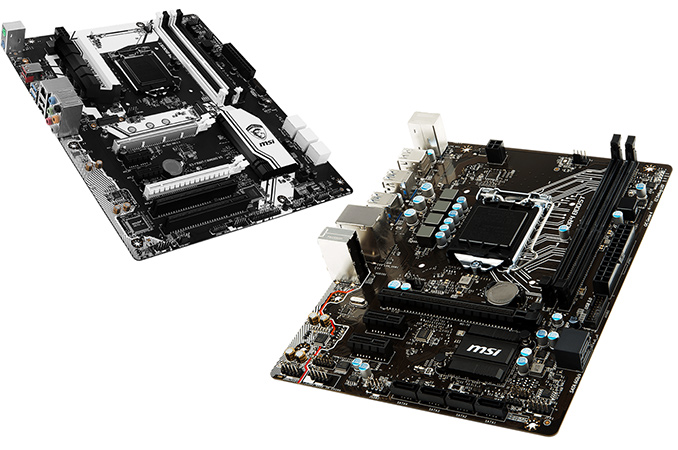
In the past week MSI has introduced two new motherboards that are compatible with Intel’s latest Xeon E3 v5 processors and based on the Intel C232 chipset - the motherboards are aimed at small form-factor workstations that have a suitable foothold in the enthusiast community. The new motherboards are the MSI E3 Krait Gaming V5 and the MSI E3M Workstation V5, and to widen the appeal the Krait model features white LEDs to appeal to modders and gamers.
By making its Xeon E3 v5 chips incompatible with consumer-grade motherboards, Intel drew a very clear line between the Core and Xeon families, something that helps the chipmaker and its partners to better position their products for personal and professional use. Some of the benefits of supporting Xeons lie in technologies as ECC, vPro as well as Trusted Execution, as long as the motherboard supports it. There are some users who prefer to use Xeons for desktop computing which is why several motherboards manufacturers recently introduced Intel C232 and C236 motherboards with more consumer-oriented features. This week, MSI joined them with two inexpensive platforms using C232.
The MSI E3 Krait Gaming V5 (E7A43), in its black and white livery, uses a five-phase power delivery with four DDR4-2133 memory slots that support up to 64GB of ECC. PCIe bandwidth comes through a PCIe 3.0 x16 slot from the CPU and an x4 from the chipset, allowing CrossFire but not SLI. Alongside this are two PCIe 3.0 x1 slots and two PCI slots via a bridge chip. A single PCIe 3.0 x4 M.2 slot is found alongside the six SATA 6Gb/s ports, although using the M.2 in PCIe mode will disable the PCIe x4 slot due to chipset limitations.
For audio and networking, we get an upgraded Realtek ALC1150 solution (with PCB separation and filter caps) and an Intel I219-V Gigabit Ethernet controller with MSI’s software that prioritizes user-specified traffic (in this case, MSI puts the focus on gaming). While there are no USB 3.1 controllers or ports here, in a little twist compared to the recent C232 motherboard we reviewed, there is a USB 3.0 Type-C port on the rear.
The MSI E3M Workstation V5 (E7A44) is a relatively simple m-ATX motherboard that has two DDR4 slots, a single PCIe 3.0 x16 slot, two PCIe x1 slots, six SATA 6Gb/s ports, six USB 3.0 connectors (with a hub), a Realtek RTL8111H Gigabit Ethernet controller, upgraded integrated audio powered by the Realtek ALC887 codec and that's about it. It's interesting to note that there's only a single 4-pin CPU power connector, but this motherboard is aimed at cheap single socket PCs, ideally with energy-efficient CPUs. The workstation name may indicate a different BIOS/software stack to the Krait Gaming, although aside from color I expect there to be very few differences.
MSI’s E3 Krait Gaming V5 and E3M Workstation V5 motherboards for LGA1151 processors are based on the Intel C232 PCH, which is not the top-of-the-range platform controller hub for the Xeon E3 v5, but is affordable enough and provides enough I/O capabilities (similar to B150 motherboards) for low-cost Xeon focused PCs. The PCH has eight PCIe 3.0 lanes, up to six USB 3.0 ports, up to six SATA 6Gb/s ports, but it is important to note the lack of support for vPro or Rapid Storage technologies.
The new LGA1151 motherboards from MSI clearly belong to the entry-level segment of the market: neither of the products have additional expansion capabilities such as USB 3.1 or Thunderbolt 3. We expect prices to be low when they show up on the market in the coming weeks.
Source: MSI


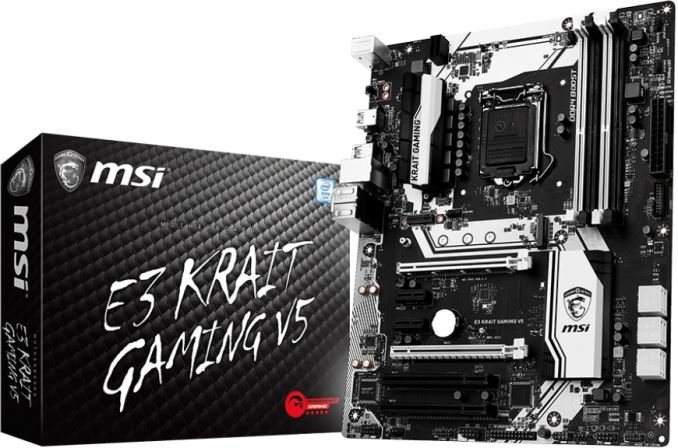
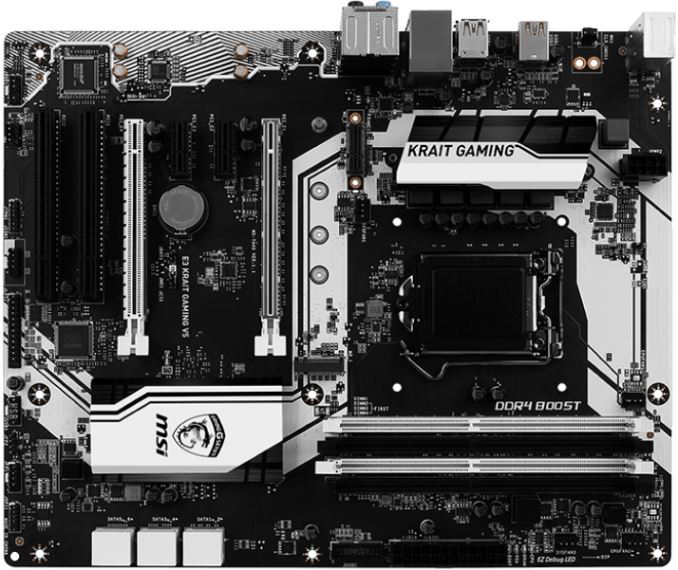





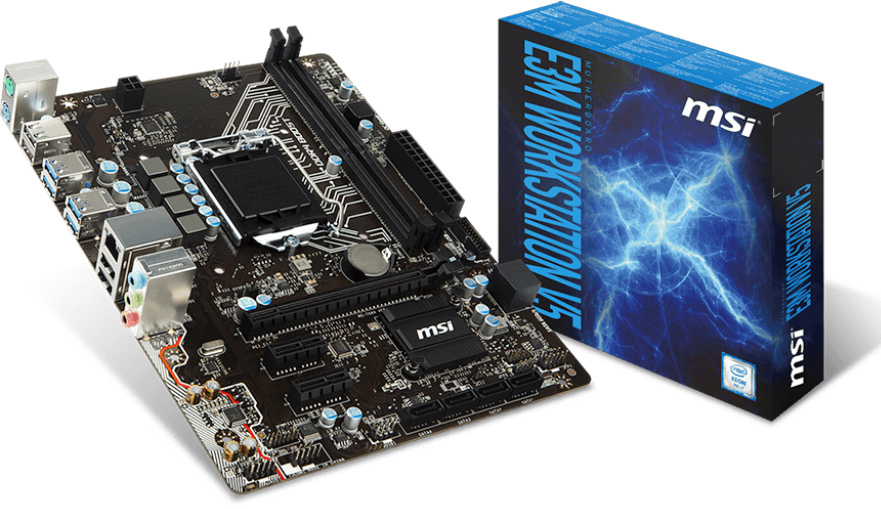
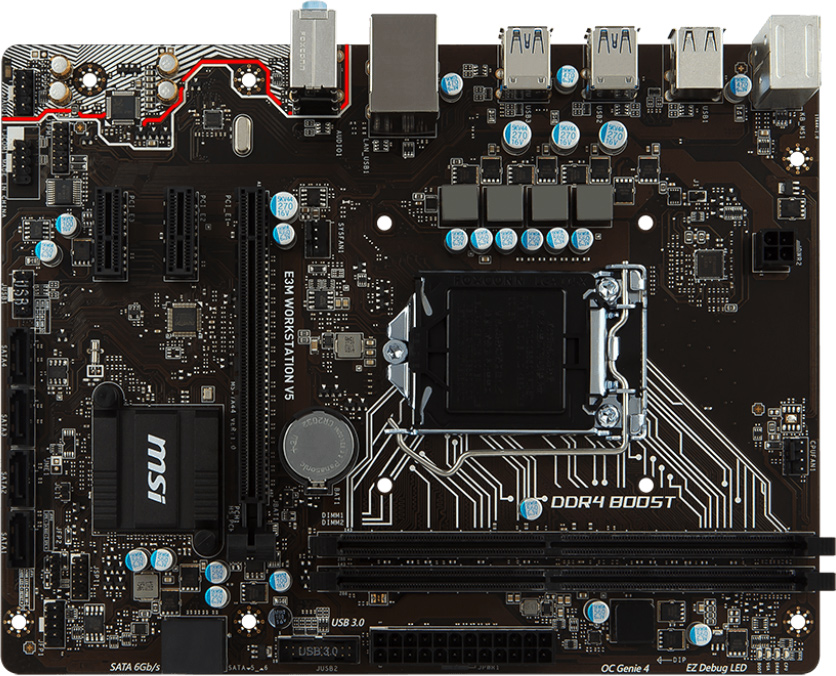













29 Comments
View All Comments
BurntMyBacon - Monday, May 9, 2016 - link
That board doesn't support the Xeon E3 series, but it should lend credibility to the idea that it can be done.dgingeri - Friday, May 6, 2016 - link
What is encouraging these motherboard makers to go with the C232? It's a horrible chipset, especially for a gaming board. The B150 is a better chipset, and cheaper. So what if the C232 supports Xeon E3 v5. People aren't going to game on a Xeon if they had a choice, and the C232 takes away the only reason to get a Xeon E3: integrated video. C232 is good for small business servers, but no gaming machines.yuhong - Friday, May 6, 2016 - link
They basically have no choice if they want to support Xeons. Yes, this is a new Skylake restriction.Lolimaster - Friday, May 6, 2016 - link
Gotta love what AMD is cooking.BurntMyBacon - Monday, May 9, 2016 - link
@yuhong: "They basically have no choice if they want to support Xeons."Err, ... , C236 isn't a choice?
QinX - Friday, May 6, 2016 - link
There is a very clear market for people like me. Workstation user and gaming enthusiast that work from home. We want/need Xeons for the Cores, ECC and other workstation features. But we also like to play games when we aren't working.Why should I have to buy 2 computers to get that? Yes you can just as wel use a regular workstation class board, but that has always been an option. Now we also get access to features like M.2 and other more gaming/enthusiast level features. I'm all for it!
dgingeri - Friday, May 6, 2016 - link
If it were a workstation board, it would use the C236 chipset, not the C232. The C232 chipset is a low end server chipset. It doesn't allow the use of the integrated graphics of the Xeon chip, doesn't allow for splitting the x16 slot for more expansion, has severe USB port limitations, and is very short on storage options. The "workstation" justification doesn't fly. C232 just doesn't work for workstations. C236 is for workstations, and the extra $15 for that chipset wouldn't be any issue for someone looking for a workstation.This and the AsRock board are gaming boards, with severe limitations on graphics and storage, which flies in the face of gaming boards. They don't make any sense. The only people who would use such boards are people who want to use the Xeon for the ECC support, but without the integrated graphics, only have one slot for a discrete graphics card, don't want to use NVMe storage, and don't have more than 6 USB and SATA devices. That's just stupid. Such a system would be extremely limited.
BurntMyBacon - Monday, May 9, 2016 - link
@dgingeri: "C236 is for workstations, and the extra $15 for that chipset wouldn't be any issue for someone looking for a workstation."The price difference of $15 is just for the chipset. Once you add in cost of components, more complex routing potentially adding more layers to the board, etc. to take advantage of the extra features, the cost difference grows to something like the difference between a B-series and and H-Series motherboard. That said, we should probably throw on a little more for the extra quality and verification testing that workstation boards typically have. Still, at the end of the day, I think it is a cost most people looking for a workstation would pay.
dgingeri - Monday, May 9, 2016 - link
If someone truly needed a Xeon workstation, cost would not be such an issue that an extra $100 would make a difference. If $100 would make a different for that person, then they shouldn't even be looking at Xeon. (Workstation video cards cost from $200 to $3000 more than their desktop equals, simply for the professional certifications. Plus, C232 doesn't allow the use of integrated graphics from the CPU.) In addition, going with a C232 board would cancel out every single advantage of Xeon E3 except ECC memory, and that isn't enough to make up for the extra $200-300 they'd be spending on a Xeon system.C232 isn't any good for a workstation board, let alone a workstation/gaming board. It IS good for a low end server, where the video card would hook to a single PCIe lane from the chipset and a RAID controller or HBA would hook to the one slot from the processor. (Although, without being able to split the lanes on the CPU, it would be restricted to using 4 lanes from the chipset for networking, which would be restrictive.) It could potentially be useful for low end but plentiful blades in a VM cluster. C232 has a very narrow market, and workstation/gaming is NOT it.
David_K - Friday, May 6, 2016 - link
You wrote that you want xeon for more cores etc, but what advantage in core count does a xeon in this socket gives you ? it is basically a Locked 4C/8T i7 with lower clocks and ECC. Maybe on 2011-V3 you can get much higher core count on the most expensive xeon vs most expensive Extreme edition i7. but on socket 1151 the xeons and this chipset are nothing special, and the fact they are so locked to server chipsets compared to last gen where people could run xeons on decent consumer xeons makes this choice even worse.